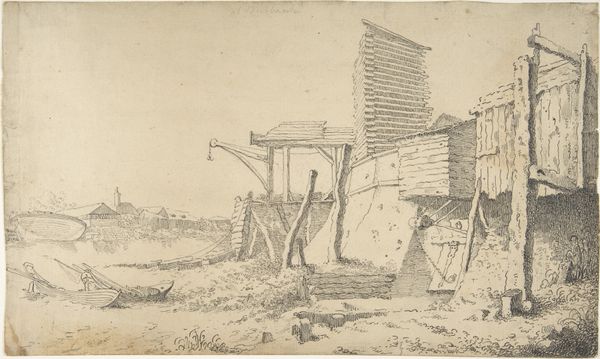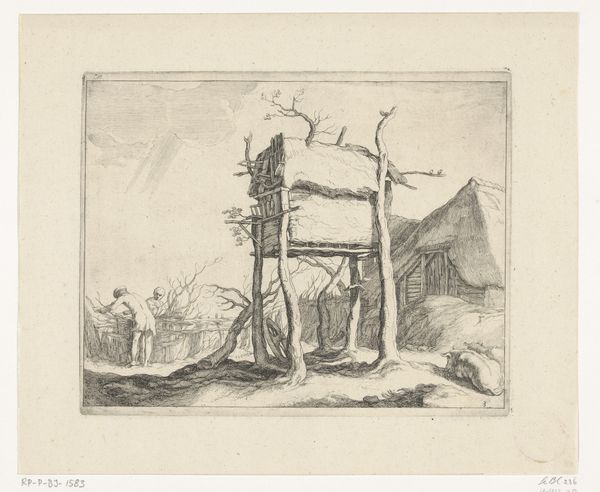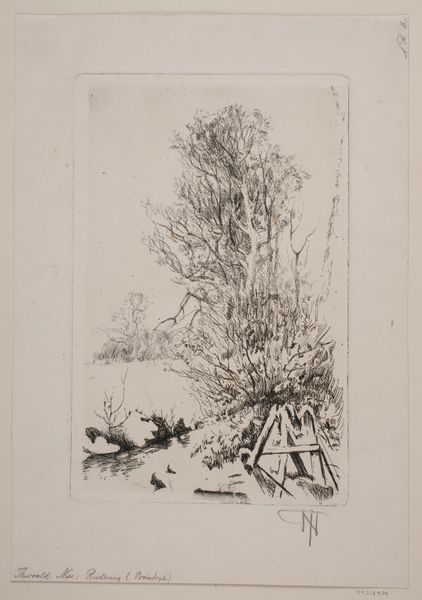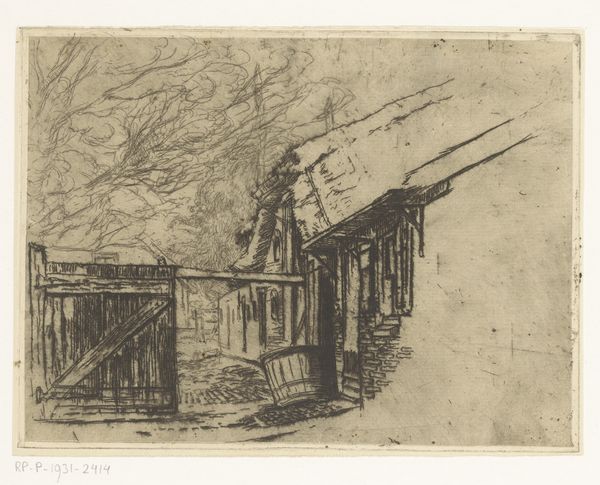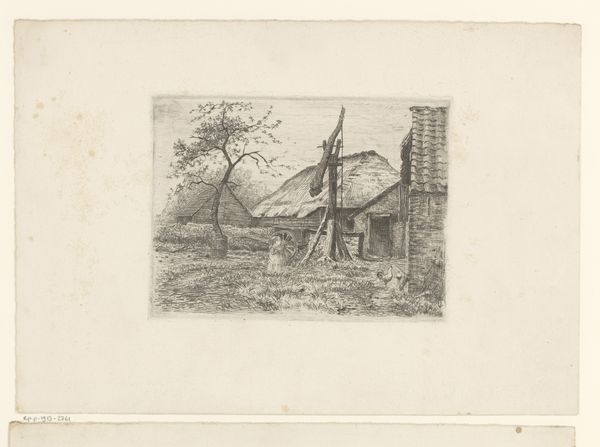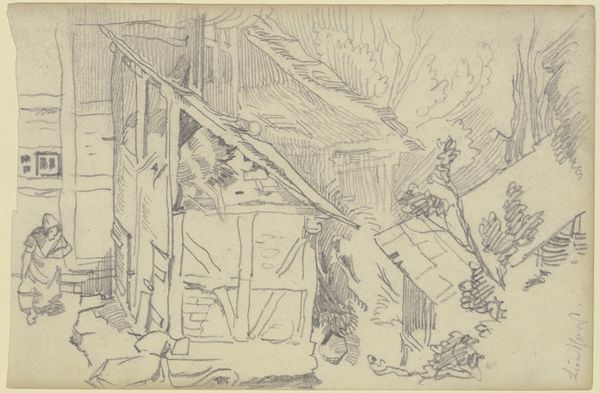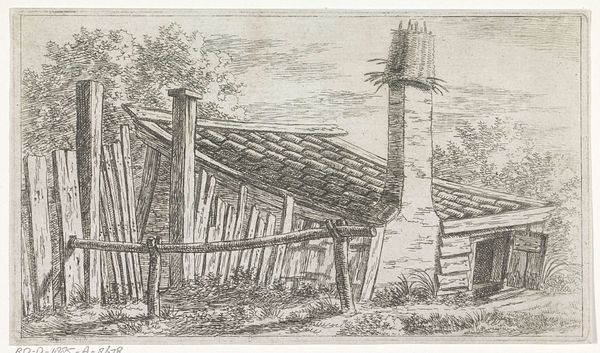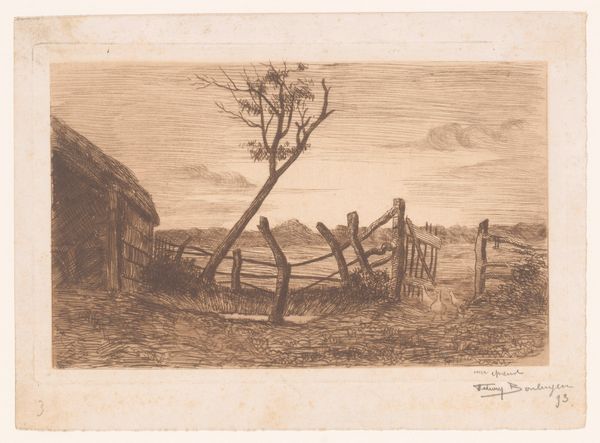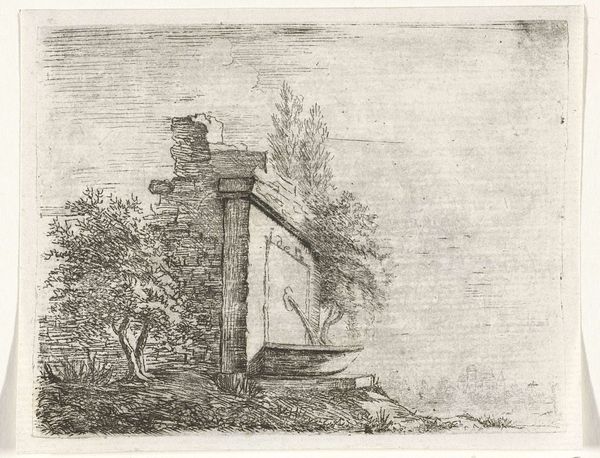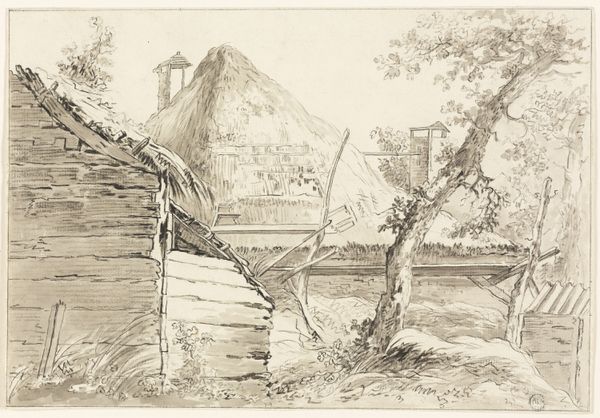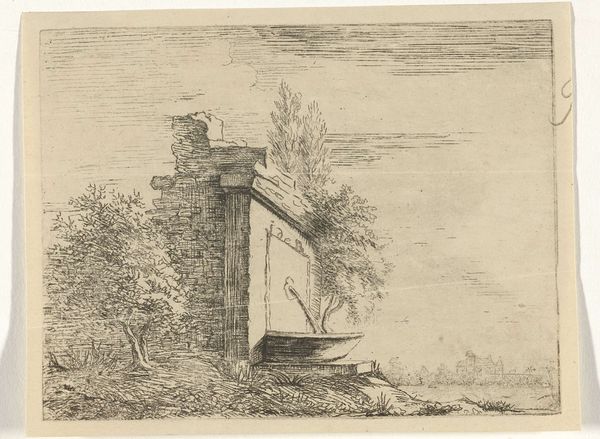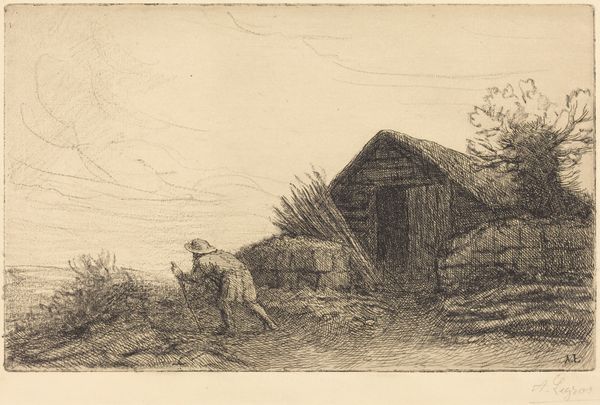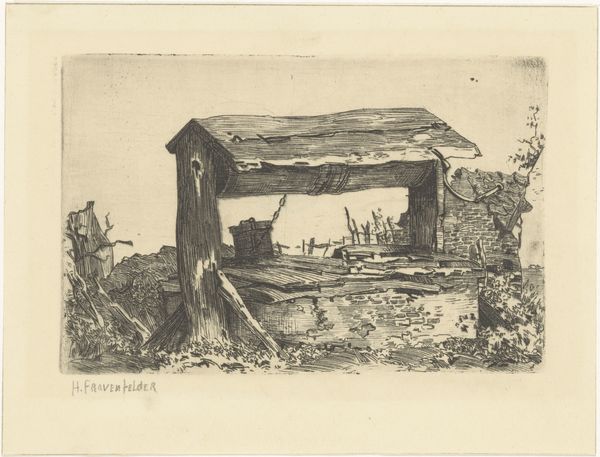
Dimensions: 172 × 272 mm (image/plate); 228 × 324 mm (sheet)
Copyright: Public Domain
Curator: Lepère’s etching, "The Lidor Windmill," from 1910, presents a compelling scene. It’s printed in black ink on paper, an understated work with grand questions. Editor: I find the image oddly calming, despite the somewhat rickety look of the windmill itself. The artist captures such everyday activity surrounding this magnificent industrial structure. What do you see in this piece? Curator: This is a crucial moment, socially and economically. Windmills were becoming obsolete due to the rise of industrialization and modern machinery. This work memorializes a moment of transition, a turning point where traditional methods are slowly fading. Look closely at the figures in the foreground; do you perceive a subtle critique in positioning the workers against this backdrop of technological obsolescence? Editor: I do now! There’s almost a sense of melancholy seeing the old ways juxtaposed with… well, a suggestion of their displacement. The figures seem almost oblivious to the change. Or are they? Curator: Exactly. Consider the perspective through a lens of labor studies. Lepère, capturing this transition, highlights the potential precarity and resilience of human labor in the face of industrial advancement. Are we seeing a lament or a subtle resistance? The details - like the people at its base – are positioned against the windmill to create an interplay of human versus industrial elements. Editor: So, this etching does more than simply depict a landscape, but uses that landscape as a stage for socioeconomic questions? Curator: Precisely! By examining Lepère's choices, we uncover layers of social commentary and historical reflection. We can reflect on our world, now facing different, equally transformative technological revolutions, with workers adjusting to a world of AI. Editor: I’m walking away seeing beyond the surface of the etching. Curator: It's an invitation to consider art as a vehicle for societal dialogue and challenge ingrained ways of seeing and understanding.
Comments
No comments
Be the first to comment and join the conversation on the ultimate creative platform.
